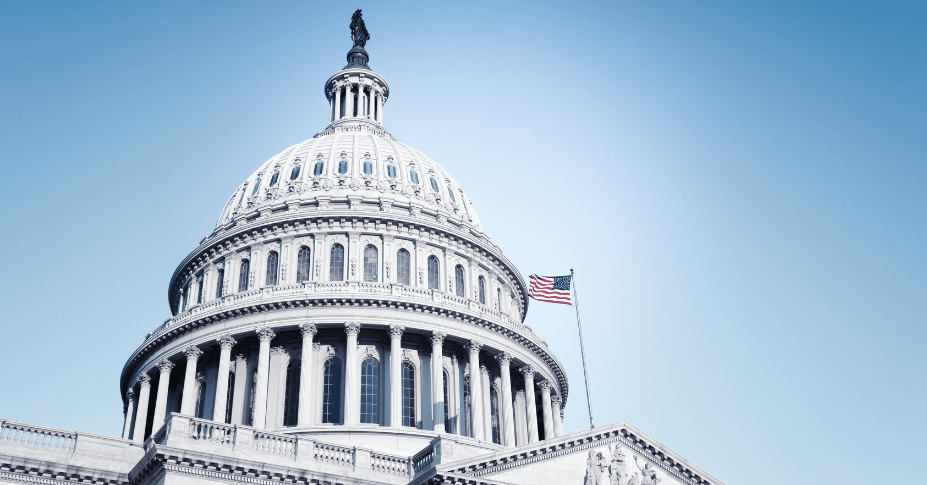Nearly Limitless Options
in One IRA
Invest in both traditional and alternative assets with a single custodian – ready to go beyond a self-directed IRA?
Investor Insights Blog|SECURE Act 2.0: What it Means for Americans’ Retirement Saving
News and Trends

By John Bowens, Director, Head of Education and Investor Success – Equity Trust Company
President Biden signed the 2023 Consolidated Appropriations Act, an Omnibus Bill, on December 29, 2022. Included in this bill is the SECURE 2.0 Act (SECURE Act 2.0), a set of provisions related to retirement savings accounts.
What’s in SECURE Act 2.0, and what does this mean for Americans and their retirement savings accounts?
When laws such as this are passed there is a period of time in which regulators, such as the IRS and Department of Labor (DOL) issue guidance, which informs the public and financial institutions on how to navigate these law changes. There will be some unanswered questions or grey areas, so as more is revealed we will be sure to communicate accordingly. As always, for your specific circumstances, we encourage you to speak to your tax professional.
Not all of the provisions take effect immediately. Many are phased in and don’t start until 2024, giving financial institutions, the public, and regulators the entire year to sort out how to navigate these changes.
Although there are many provisions, here are details on 12 that stand out based on a majority of retirement savers’ interests and needs:
IRAs and workplace retirement plans, such as 401(k)s, will have catch-up contribution limits indexed to the cost-of-living adjustment, whereas in previous years the amount was fixed. Also, there are some unique catch-up contributions for those aged 60 to 63.
For individuals in the later years of working, but before retirement, between ages 60 to 63, the catch-up contribution will increase starting in 2025. Eligible taxpayers will be able to contribute the greater of $10,000 or 150 percent of the standard catch-up contribution. In other words, taxpayers between 60-63 can anticipate contributing 10,000 per year for those 3 years.
Starting in 2024, workers whose wages are over $145,000 during the previous year will be forced to make their catch-up contributions to a Roth (after-tax) account. The wage threshold will be indexed annually. Is this concerning? Possibly for some that want a tax deduction, but for some high-income earners who prefer after-tax contributions, this is not of concern to them.
[Related: Roth vs. Traditional IRA FAQs]
SIMPLE IRA catch-up contributions will also be adjusted for inflation and those 60 to 63 years old.
SEP and SIMPLE IRA contributions could be made on an after-tax basis, instead of a pre-tax, or tax-deferred basis. Those that prefer after-tax, tax-free growth, may want to consider this, providing they are self-employed or have income that qualifies.
For those with a tax-deferred account, such as a Traditional IRA, SEP IRA, SIMPLE IRA, or tax-deferred 401(k), you must begin distributing funds at a specified age, based on the IRS published life expectancy table. The current RMD age is 72.
SECURE Act 2.0 will adjust this age to 73, beginning after December 31, 2022, and age 75 after December 31, 2032. For those that have already turned 72, they maintain RMDs as-is.
Video: SECURE Act 2.0 Summary
Employer matching of student loan repayments is allowed. In 2024, employers can match student loan repayments as if the student loan repayments were deferrals.
Under current law, employees with at least 1,000 hours of service in 23 months, or 500 service hours in three-consecutive years must be eligible to participate in the employer’s qualified retirement plan. The SECURE Act reduces that three-year rule to two years for plans starting in 2025.
Penalty-free emergency distributions of up to $1,000 will be permitted from retirement plans. Once every three-year limit on this, or once a year, if repaid within three years.
The SECURE Act allows for the tax-free rollover of funds from 529 education savings plans to Roth IRAs if certain conditions are met. This can be beneficial for families who have saved too much in their children’s 529 plans or want to use the money for non-education expenses without facing penalties.
Effective in 2025, workplace plans like 401(k)s must automatically enroll employees when eligible. There are specified percentages of wages deferred, which increase year over year.
Non-highly compensated employees can contribute the lesser of 3 percent of compensation or $2,500 post-tax to an emergency savings account and can take funds out if needed without penalty or taxes.
Currently, plans may automatically distribute small accounts of less than $5,000 to former participants. If greater than $1,000, plan holders can roll over into an IRA without the participant’s consent. This limit, 12 months from enactment will increase to $7,000 and permits the transfer of default IRAs into the participant’s new employer plan.
Sources:
1. SECURE 2.0 Act: Legislation and Summary
2. SECURE 2.0: Retirement savings plan changes, drafting error, tax and administrative implications – Wolters Kluwer
3. Catch-Up Contributions to Retirement Accounts Boosted By SECURE Act 2.0 – Kiplinger
You are leaving trustetc.com to enter the ETC Brokerage Services (Member FINRA/SIPC) website (etcbrokerage.com), the registered broker-dealer affiliate of Equity Trust Company. ETC Brokerage Services provides access to brokerage and investment products which ARE NOT FDIC insured. ETC Brokerage does not provide investment advice or recommendations as to any investment. All investments are selected and made solely by self-directed account owners.
Continue